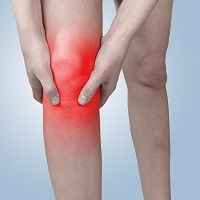Article
Quality of Life After Unicompartmental Knee Arthroplasty
Author(s):
Researchers recently published a study that examined patients' activity level and health-related quality of life after lateral unicompartmental knee arthroplasty.

Unicompartmental knee arthroplasty (UKA) has become an attractive surgical option recently, especially among younger, more active patients. These recreational athletes have high hopes of returning to return to full activity after surgery.
Researchers from the University of Heidelberg in Germany have published a study that examined patients' activity level and health-related quality of life after lateral UKA. Published in the November 2015 issue of Knee Surgery, Sports Traumatology, Arthroscopy, the authors found that patients' expectations are almost always met.
This small study involved 45 patients who had lateral UKA. The study tool was a survey that queried patients' sporting and recreational activities at approximately 3 years post-surgery. The researchers also asked about health-related quality of life.
Before the onset of the first restricting symptoms, 93% of patients participated in at least one sport. After surgery, 98% of patients reported that they had returned to sports and recreational activities. The return to activity was gradual, with more than half of patients reporting activity at 3 months, and three-quarters returned to activities within 6 months.
The researchers used a validated activity score to follow patients, and found that after surgery, the score increased significantly. Two-thirds of patients were able to engage at a high activity level.
Compared to their pre-surgery activities, patients participated in a similar number of activities with biking, hiking and long walks most popular after they recovered. A significant finding was that they tended to prefer low impact activities to high-impact activities.
Patients indicated that they were more cautious about activity that might injure their knees regardless of age or sex. Only 22% said that pain or discomfort limited their performance. A few patients, however, were able to participate in triathlons and marathons.
Patients reported the same quality of life before and after surgery, a finding that the researchers interpreted as indicating their quality of life mimics that of people free from medical disorders.
This study was not designed to look at activity's effect on implant fixation and wear, but in light of the remarkable activity levels these patients enjoyed, the researchers indicate studies to assess wear are needed.




